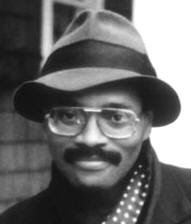Recently, these two movements have begun to merge: the political values inherent in the Black Power concept are now finding concrete expression in the aesthetics of Afro-American dramatists, poets, choreographers, musicians, and novelists. A main tenet of Black Power is the necessity for Black people to define the world in their own terms. The Black artist has made the same point in the context of aesthetics. The two movements postulate that there are in fact and in spirit two Americas—one black, one white.
The Black artist takes this to mean that his primary duty is to speak to the spiritual and cultural needs of Black people. Therefore, the main thrust of this new breed of contemporary writers is to confront the contradictions arising out of the Black man’s experience in the racist West. Currently, these writers are re-evaluating Western aesthetic, the traditional role of the writer, and the social function of art. Implicit in this re-evaluation is the need to develop a “black aesthetic.”
It is the opinion of many Black writers, I among them, that the Western aesthetic has run its course: it is impossible to construct anything meaningful within its decaying structure. We advocate a cultural revolution in art and ideas. The cultural values inherent in Western history must either be radicalized or destroyed, and we will probably find that even radicalization is impossible. In fact, what is needed is a whole new system of ideas. Poet Don L. Lee expresses it:
We must destroy Faulkner, dick, jane, and other perpetrators of evil. It’s time for Du Bois, Nat turner, and Kwame Nkrumah. As Frantz Fanon points out: destroy the culture and you destroy the people. This must not happen. Black artists are culture stabilizers; bringing back old values, and introducing new ones. Black Art will talk to the people and with the will of the people stop impending “protective custody.”
The Black Arts Movement eschews “protest” literature. It speaks directly to Black people. Implicit in the concept of ‘protest” literature, as brother Knight has made clear, is an appeal to white morality:
Now any Black man who masters the technique of his particular art form, who adheres to the white aesthetic, and who directs his work toward a white audience is, in one sense, protesting. And implicit in the act of protest is the belief that a change will be forthcoming once the masters are aware of the protestor’s “grievance” (the very word connotes begging, supplications to the gods). Only when that belief has faded and protestings end, will Black art begin.
Brother Knight also has some interesting statements about the development of a “Black aesthetic”:
Unless the Black artist establishes a “Black aesthetic” he will have no future at all. To accept the white aesthetic is to accept and validate a society that will not allow him to live. The Black artist must create new forms and new values, sing new songs (or purify old ones); and along with other Black authorities, he must create a new history, new symbols, myths, and legends (and purify old ones by fire). And the Black artist, in creating his own aesthetic, must be accountable for it only to the Black people. Further, he must hasten his own dissolution as an individual (in the Western sense)—painful though the process may be, having been breast-fed the poison of “individual experience.
When we speak of a “Black aesthetic” several things are meant. First, we assume that there is already in existence the basis for such an aesthetic. Essentially, it consists of an African-American cultural tradition. But this aesthetic is finally, by implication, broader than that tradition. It encompasses most of the useable elements of the Third World culture. The motive behind the Black aesthetic is the destruction of the white thing, the destruction of white ideas, and white ways of looking at the world.
The new aesthetic is mostly predicated on an Ethics which asks the question: whose vision of the world is finally more meaningful, ours or the white oppressors’? These are basic questions. Black intellectuals of previous decades failed to ask them. Further, national and international affairs demand that we appraise the world in terms of our own interests. It is clear that the question of human survival is at the core of contemporary experience. The Black artist must address himself to this reality in the strongest terms possible. In a context of world upheaval, ethics and aesthetics must interact positively and be consistent with the demands for a more spiritual world.
Consequently, the Black Arts Movement is an ethical movement. Ethical, that is, from the viewpoint of the oppressed. And much of the oppression confronting the Third World and Black America is directly traceable to the Euro-American cultural sensibility. This sensibility, antihuman in nature, has, until recently, dominated the psyches of most Black artists and intellectuals; it must be destroyed before the Black creative artists can have a meaningful role in the transformation of society.
It is this natural reaction to an alien sensibility that informs the cultural attitudes of the Black Arts and the Black Power movement. It is a profound ethical sense that makes a Black artist question a society in which art is one thing and the actions of men another. The Black Arts Movement believes that your ethics and your aesthetics are one. That the contradictions between ethics and aesthetics in Western society is symptomatic of a dying culture.

